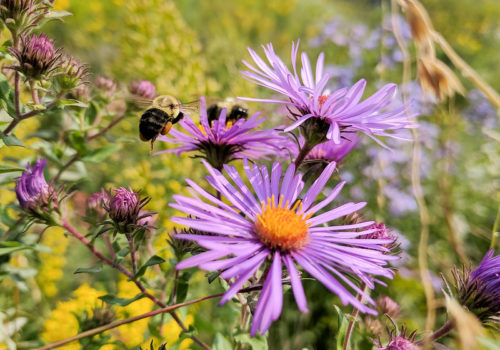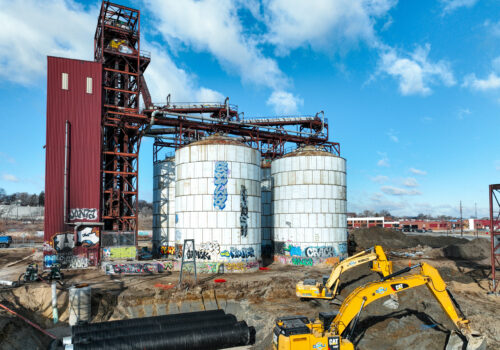News / September 21, 2021
Making Green Infrastructure Work: Lessons Learned from Towerside’s District Stormwater System
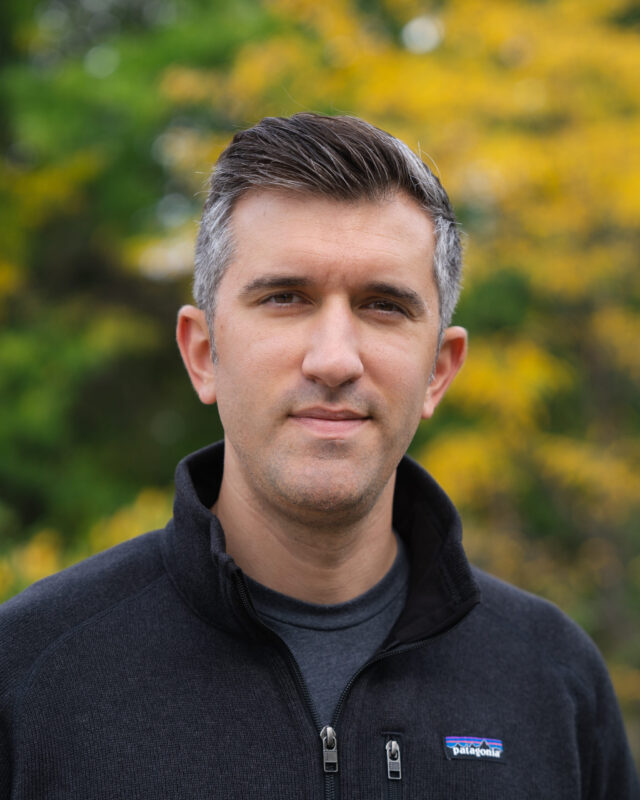
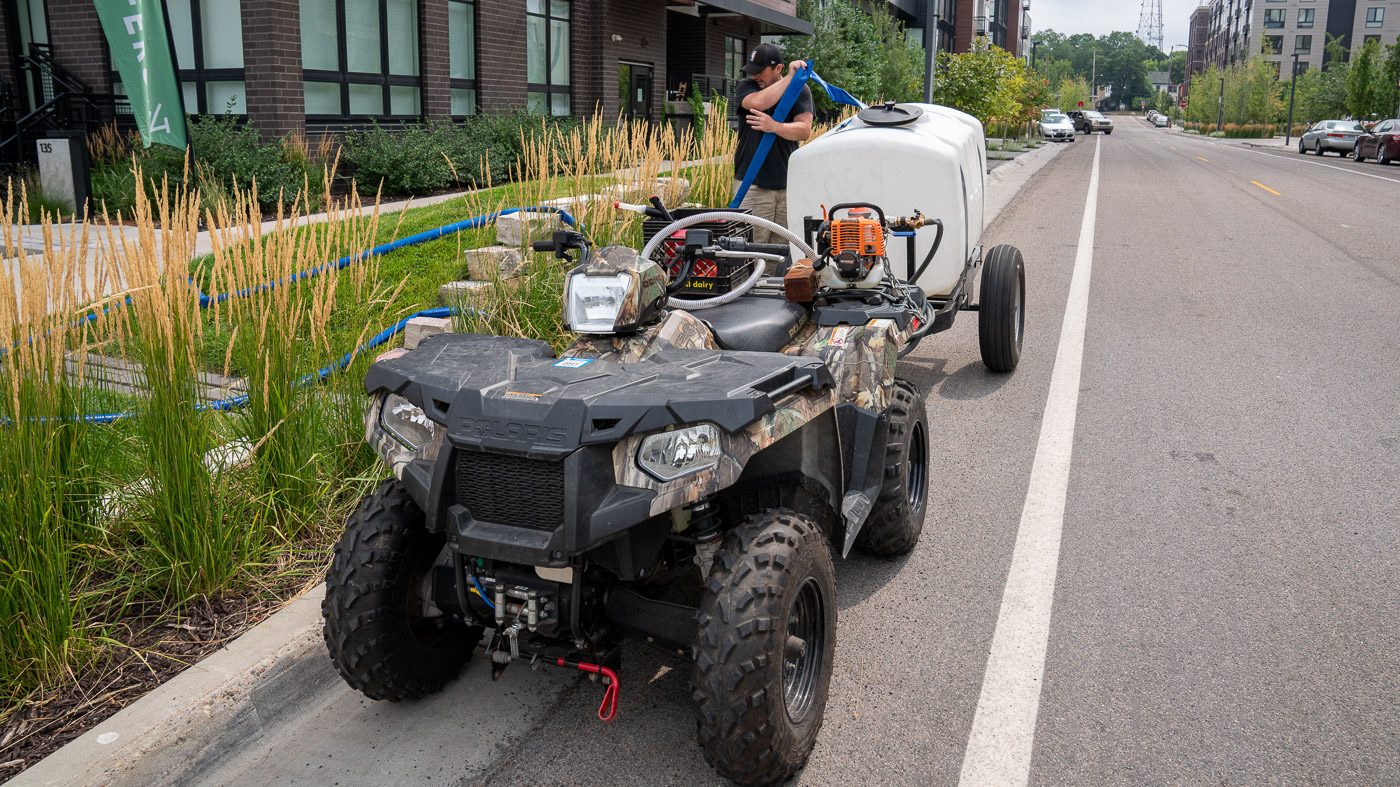
At the peak of this summer’s drought, a contractor carefully drove a four-wheel ATV up and down the sidewalks along Fourth Street SE, just east of Huntington Bank Stadium in Minneapolis. Behind him, he towed a 200-gallon tank filled with recycled stormwater runoff, which he used to water a half-mile of boulevard strips filled with trees and plantings specially designed for stormwater treatment and wildlife habitat.
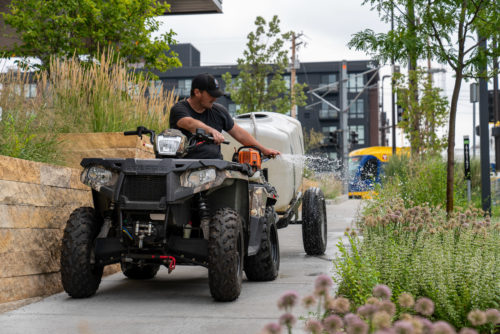
Nearby, a maintenance worker watered the community gardens at a new city park using the same supply of treated stormwater, located just a few feet away in a 207,000-gallon underground tank. An ultraviolet (UV) light treatment system and a series of pumps made the stormwater safe to handle and conveyed it to several adjacent properties, where it was used to irrigate the landscaping.
All summer long, as the drought ravaged the state and officials implemented watering restrictions designed to protect the city’s main water supply — the Mississippi River — the stormwater reuse system at the Towerside Innovation District pumped continuously. In June and July alone, it distributed approximately 100,000 gallons of water (including 19,000 gallons distributed by the ATV). Incredibly, this barely put a dent in the amount of water available in the tank; the handful of small rain events that occurred during that time frame replenished nearly all of the water that was used.
This is what success looks like for the Towerside District Stormwater System. Six years after the initial conceptual plan was developed, Minneapolis has a functioning, large-scale stormwater reuse system that provides a reliable source of treated stormwater for a variety of non-potable uses — all while keeping pollutants out of the river, creating new green spaces for the public to enjoy, and adding to local climate resiliency by taking some of the burden off of local stormsewers.
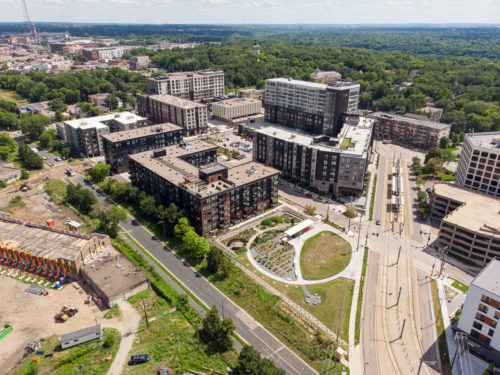
It also looks spectacular. Lush gardens and boulevards filled with thriving native plants underscore gleaming new market rate and affordable residential and multi-use buildings. Ten years earlier, the area’s defining feature was an empty lot surrounded by abandoned industrial buildings.
Success at Towerside didn’t come easy, however. It required hard work and persistence — first, by a broad coalition of partners with diverse backgrounds and interests shaping a common vision, and then by a handful of individuals going out of their way to actually put the system to work.
This is the story of how those individuals overcame maintenance problems, tank leaks, logistical challenges, and red tape to make district stormwater reuse and urban wildlife habitat a reality at Towerside.
(WATCH: Take a Tour of the Towerside District Stormwater System)
From Vision to Reality
Towerside is Minnesota’s first designated innovation district. Nestled between the University of Minnesota and Highway 280 on the Minneapolis/St. Paul border, the asset-rich, 370-acre area was envisioned as a place that would “bring together entrepreneurs, residents, researchers, developers and businesses within a new, equitable, restorative, healthy and arts-inspired community.”
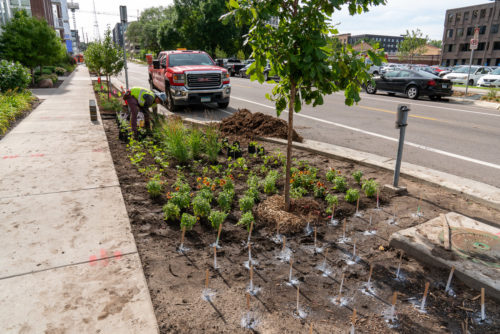
A broad coalition of community stakeholders came together to develop this vision. Neighbors, planners, designers, architects, engineers, professors, nonprofits, developers, and a variety of local government entities all collaborated with the common goal of creating a new, more sustainable, and replicable model of urban redevelopment.
(WATCH: Towerside Board Member Dick Gilyard talks about the vision for Towerside.)
Developer Jeff Barnhart was there from the beginning. Barnhart, who owns several properties at Towerside, played a key role in moving the partnership forward from the private side.
As a young developer, Barnhart was at the table to get his projects built. As he participated in the many community meetings and planning sessions for Towerside, he also came to believe in the community’s vision for the area. When the MWMO, as a member of the partnership, approached him and three other developers about building a stormwater treatment and reuse system for the district, Barnhart embraced the idea.
The MWMO saw a rare opportunity to build stormwater treatment on a district scale. In order to make such an idea work, the MWMO needed to secure the participation — and cooperation — of Barnhart and the other developers. Barnhart signed up early on, seeing it as a unique amenity that could benefit future residents as well as the property owners.

In the end, all four private developers agreed to manage their stormwater runoff jointly rather than separately. The MWMO facilitated this first-of-its-kind agreement and provided a $1.3 million grant and project support from staff to complement the owners’ own investments in stormwater infrastructure.
In 2015, the district stormwater system officially went online. The final design comprises a pair of biofiltration basins filled with native plants that capture and treat runoff from a two-block (8-acre) area and then store it in a large underground tank. From there, it can be pumped directly to the adjacent properties for reuse.
(WATCH: See how Towerside’s stormwater reuse system works.)
The UV treatment system was added in 2019 to ensure that the water is treated to allow for many non-potable uses (so that property owners would be comfortable using the water for things like washing off sidewalks). That same year, a separate MWMO grant funded redesigned boulevards along Fourth Street SE, featuring trees and plantings designed for stormwater and pollinating insects and birds. In exchange for the grant, Towerside agreed to handle the long-term maintenance and operations for the boulevard plantings.
Maintenance Issues: Agreements, Tank Leaks, and Weedy Boulevards
Building green infrastructure is only half the battle. Operating and maintaining it often proves to be the bigger challenge. Towerside was no exception.
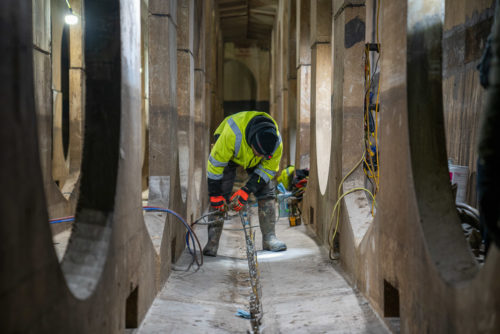
Setting up the necessary maintenance agreements proved to be a complex endeavor. The MWMO succeeded in setting up an agreement between the four landowners for the district stormwater system, and Towerside reached an agreement with landowners to fund operations and maintenance on the boulevards between Malcolm and 29th Avenues. A third Towerside agreement to fund operations and maintenance for the boulevards between 25th and 29th Avenues has yet to be finalized, however.
Next, there was the leaky tank. When the MWMO installed monitoring equipment to monitor water levels in the stormwater reuse tank, they discovered it was leaking. This wasn’t necessarily a problem from an environmental standpoint (the treated stormwater could simply infiltrate into the ground), but it was a problem from a reuse perspective. The MWMO was obligated, under its agreement with the landowners, to provide a system that could store a certain amount of water for their use. That would be impossible with a leaking tank.
Several attempts to find and fix the leaks initially failed. Meanwhile, the control system for the UV treatment was proving to be wonky at times, setting off false alarms and triggering frequent visits by MWMO staff and contractors. Both problems were ultimately solved, but they delayed implementation of the system.
Meanwhile, Barnhart watched in dismay as drought-stricken native plants, weeds, and trash began to rapidly overtake the boulevards in front of his buildings and all the way down Fourth Street. Towerside had agreed to take over the maintenance of the boulevards — a task traditionally performed by the city — in exchange for being able to plant native habitat there. It was in the process of hiring a contractor to handle the maintenance, but the quickly deteriorating drought conditions meant the plants were in danger of dying in the meantime.
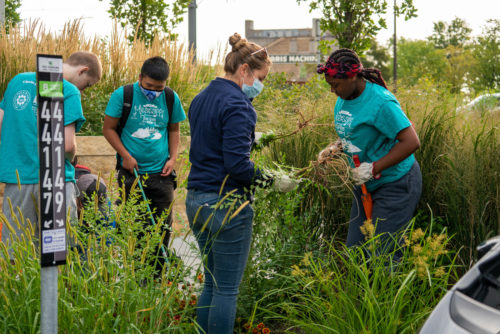
With his name on several of the redeveloped properties — and his reputation tied to their success — Barnhart wanted to keep Towerside’s public green spaces in good shape. He called Dan Kalmon, MWMO’s Planning Principal, who worked closely with Barnhart throughout the redevelopment project, and the two agreed on a temporary watering contract to keep things running until a more permanent maintenance contract was in place with Towerside. In addition, Barnhart and his staff took on a good faith commitment with Towerside to pull weeds and clean up trash in the boulevard.
“I think everybody saw the urgency of what was happening to the new plantings. They needed a caretaker,” Barnhart said.
Barnhart quickly found himself playing the role of community organizer as well. In addition to coordinating the maintenance work, he lobbied the other property owners along Fourth Street to take a more active role in addressing issues in and around their properties, with varying degrees of success. He also worked with Kalmon on providing heavy equipment, materials, and labor for a volunteer boulevard weeding, cleanup, and mulching event.
Barnhart also made quick work of identifying an innovative and effective way to get the water from the stormwater tank to the boulevards. He considered buying a truck with a water tank, but quickly realized that would entail acquiring appropriate permits and causing temporary impacts to traffic and/or bike lanes. Instead, he opted for a nimbler solution: a four-wheel ATV with a water tank and a gas-powered pump. While it requires more refill trips, this setup allows Barnhart’s staff to maneuver on the sidewalk and other tight spaces as needed without impacting traffic, and allows for more direct control over how much water each boulevard receives.
Plenty of Stormwater to Go Around
With the district stormwater system fully up and running, and with Barnhart coordinating work on the boulevards and landscaping, the MWMO and its partners finally had an opportunity to see how the system performs. So far, it has exceeded expectations.
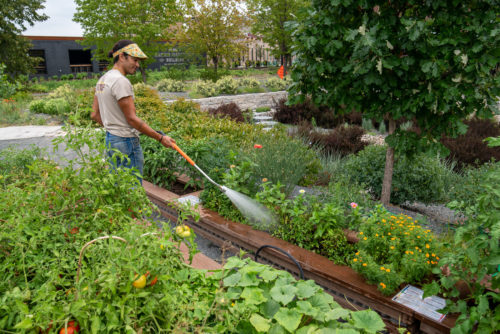
For the entire month of July, the water level in the tank only dropped 10 percent. During that same time, the Twin Cities metro area received less than an inch of rain for the entire month, with the largest single rain even being 0.43 inches. This means the tank wasn’t being replenished during that time frame. (The system was designed to be completely filled by a 1.25″–1.5″ rain event, but rain events much smaller than an inch often don’t generate much runoff.)
This means the property owners were able to water their landscaping and gardens in a bone-dry month while barely putting a dent in the supply of available stormwater.
That’s good news to Kalmon, who said one of the main challenges in designing the system was that each property owner wanted prioritized access to a specific amount of water, which would have effectively privatized a public resource. After much negotiation and consideration of future operational issues and maintenance costs, the MWMO and property owners agreed to have the stormwater remain a public good — i.e., a “first come, first serve” water resource.
“We didn’t know what the demand would be,” Kalmon said. “When we set up the agreements around that tank, everyone was concerned there wouldn’t be enough water.”
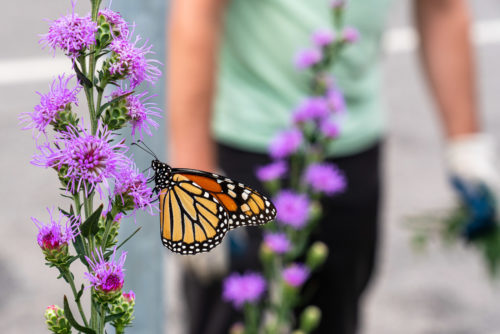
The Towerside area is still redeveloping, and the MWMO is now looking toward a second phase of district stormwater implementation. The MWMO and its partners are investigating options for managing stormwater in the 18-acre area north of the University of Minnesota Transitway. Due to existing conditions on this site, a higher-than-usual threshold of the stormwater runoff will have to be managed on-site. That leaves many opportunities for stormwater treatment and reuse, including potentially tying into the existing district system.
For now, Towerside stands as a living example of how multiple stakeholders working together can implement a more sustainable and innovative type of urban redevelopment. In the words of architect Dick Gilyard, a Towerside board member and a key voice in the project, the district stormwater system shows how dedicated partners can make big ideas into reality.
“It serves as a replicable model of district-scale stormwater management as a key component of 21st Century urban redevelopment that is resilient, equitable, and protective of the environment,” Gilyard said.
